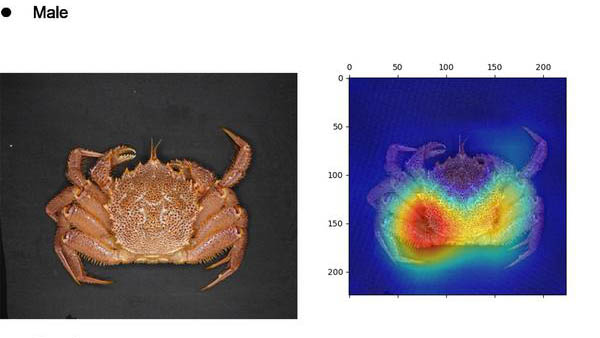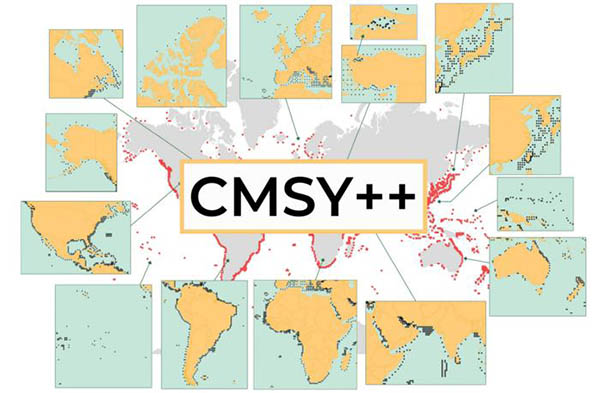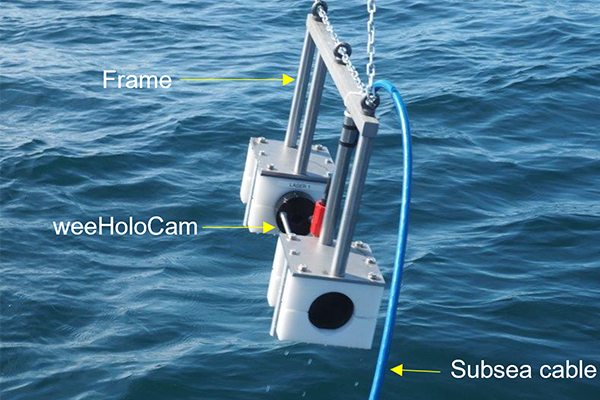AI-powered model developed by researchers ‘vastly outperformed’ humans in correctly identifying the gender of horsehair crabs

A new study indicates that artificial intelligence (AI) can be used to correctly identify the gender of horsehair crabs, outperforming human fishermen and could potentially be an important tool for enhancing conservation and farming efforts.
During winter in Japan, fishermen in the northern regions fish for the sought-after horsehair crab (Erimacrus isenbeckii), known locally as “kegani.” To protect the horsehair crab population from overfishing, the Japanese and prefectural governments have implemented various restrictions on their capture. For example, in Hokkaido, where kegani is abundant, capturing females for consumption is strictly prohibited.
To comply with these laws, experienced fishermen have learned how to tell apart males from females through visual inspection. While it is relatively straightforward to distinguish the sexes by looking at the underside (abdomen) of the crabs, doing so by looking at their shell side is much more challenging. Unfortunately, when captured crabs settle on board a ship, they almost always do so with their shell side pointing up, and picking them up and flipping them individually to determine their sex is time-consuming.
However, a new study published in Scientific Reports suggests that using deep learning could help create efficiencies.
A research team from Japan implemented three deep convolutional neural networks based on three well-established image classification algorithms: AlexNet, VGG-16 and ResNet-50. To train and test these models, they used 120 images of horsehair crabs captured in Hokkaido; half of them were males, and the other half were females. A notable advantage of these models is that they are “explainable AI.” Simply put, it means given an image of a crab, it is possible to see what specific regions of the image were relevant for the algorithm to make its classification decision. This can reveal subtle differences between the males and females that could be useful for manual classification.
The test results were “quite promising” in terms of accuracy and performance metrics, with the AI approach vastly outperforming humans and providing consistent, reliable classification.
“Even though gender classification was virtually impossible by human visual inspection on the shell side, the proposed deep learning models enabled male and female classification with high precision, achieving an F-1 measure of approximately 95 percent and similarly high accuracy values,” said Shin-ichi Satake, professor at Tokyo University of Science (TUS).
Interestingly, when observing the heatmaps, which represented the regions the models focused on for classification, the team found significant differences between the sexes. For one, the heatmap was enhanced near the genitalia shape on the abdomen side. When classifying males, the algorithms focused on the lower part of the carapace.
In contrast, when classifying females, the algorithms focused on the upper portion of the carapace. This could provide useful information not only for the development of future AI sex classification models for crabs but also shed light on how experienced fishermen can tell apart males from females apart even when looking at their shell side.
Considering that being captured can be a great source of stress for crabs, being able to quickly tell females apart without flipping them before release could help prevent health or reproductive problems for these crabs. Thus, deep learning could potentially be an important tool for enhancing conservation and farming efforts.
“The fact that deep learning can discriminate male and female crabs is an important finding not only for the conservation of these important marine resources but also for the development of efficient aquaculture techniques,” said Satake.
Notably, implementing AI classification techniques directly on ships could reduce the amount of manual work and make crab fishing more cost-effective. Moreover, the proposed models could be retrained and repurposed for the gender classification of other species of crabs, such as the blue crab or the Dungeness crab.
Overall, the researchers say this study showcases how AI can be leveraged in creative ways to “not only make people’s work more efficient but also have a direct positive effect on conservation, responsible fishing and sustainability of crab aquaculture.”
Now that you've reached the end of the article ...
… please consider supporting GSA’s mission to advance responsible seafood practices through education, advocacy and third-party assurances. The Advocate aims to document the evolution of responsible seafood practices and share the expansive knowledge of our vast network of contributors.
By becoming a Global Seafood Alliance member, you’re ensuring that all of the pre-competitive work we do through member benefits, resources and events can continue. Individual membership costs just $50 a year.
Not a GSA member? Join us.
Author
-
Responsible Seafood Advocate
[103,114,111,46,100,111,111,102,97,101,115,108,97,98,111,108,103,64,114,111,116,105,100,101]
Tagged With
Related Posts

Fisheries
AI-powered, data-limited stock assessment method more accurate than ‘gold standard’ in predicting fisheries catches
AI-powered CMSY methodology requires inputting only catch data to estimate fish stocks and how much fishing pressure can be applied.

Intelligence
First Nations-led artificial intelligence technology holds promise for salmon recovery
New artificial intelligence monitoring tool is "remarkably adept" at identifying and counting fish species.

Intelligence
Artificial intelligence successfully predicts toxic algae in UK seafood
Molecular biology-based approach with artificial intelligence can predict a rise in toxic algae weeks earlier than the microscope method.

Intelligence
Could holographic cameras and AI technology lead to an early warning system for sea lice in the ocean?
Researchers are exploring the use of underwater holographic cameras and artificial intelligence technology to identify sea lice in the ocean.



